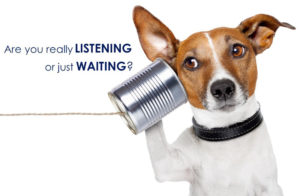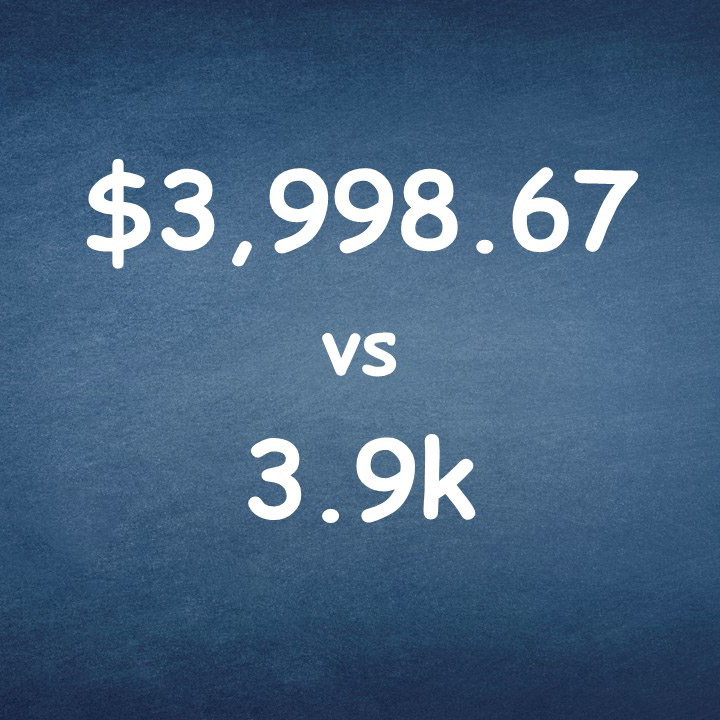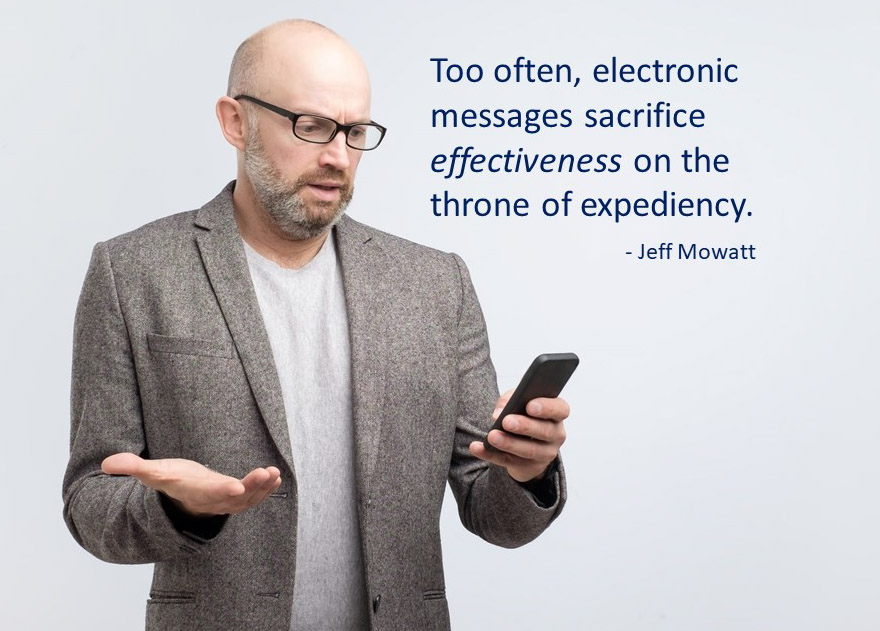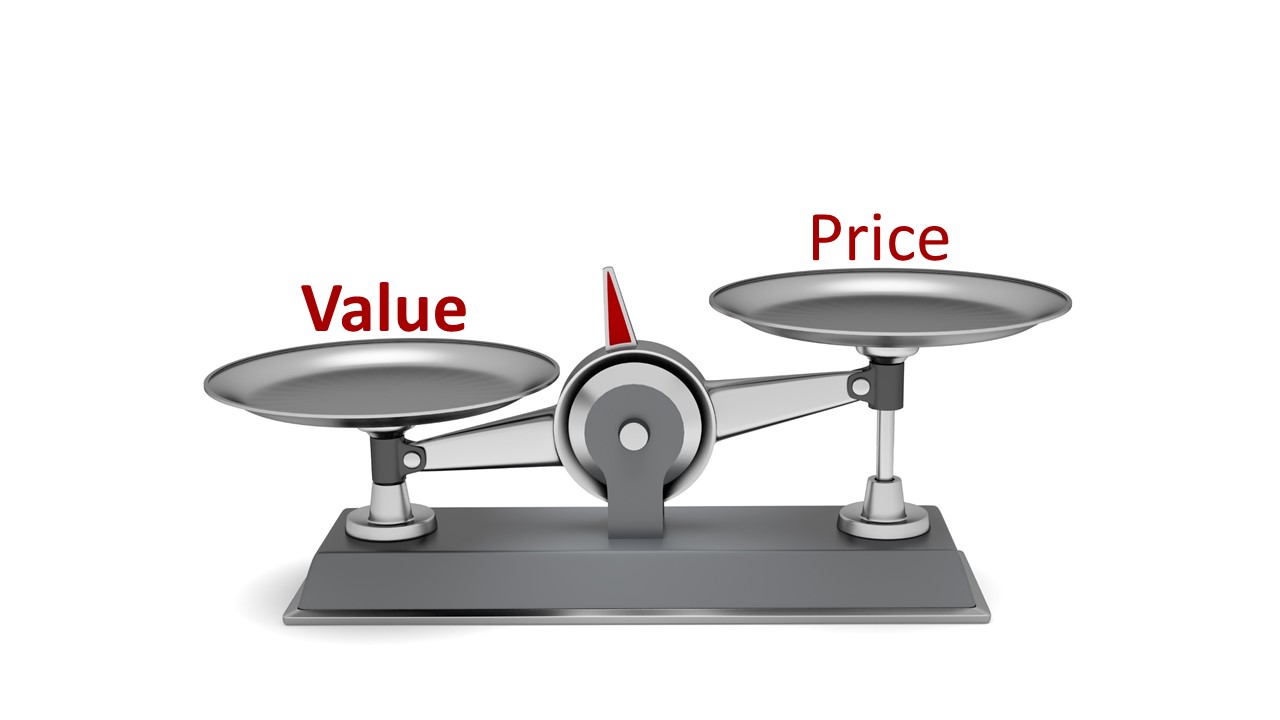Trusted Advisor Customer Service Blog Posts
Written By Jeff Mowatt – (all original content not AI generated)
Written By Jeff Mowatt – (all original content not AI generated)
Keeping constructive during covid
 If your business is down and your enthusiasm is waning during covid, here's a tip proven to boost revenues and put more spring in your step. Let me start by saying I've never been a fan of pseudo-science theories like "The Secret" where - by simply visualizing things you want, they begin to manifest themselves. Don't get me wrong, I'm an avid proponent and practitioner of writing goals and taking steps to accomplish them. I don't however, think putting a picture of a Maserati on your fridge is going to do a single thing to make it appear in your driveway. On the contrary, I think having a picture of a car we can't yet afford insinuates to our psyche that the aging Corolla we drive is depressing. When obstacles occur (like a freakin’ pandemic!) that sportscar staring at us from our wall becomes an accusation; a reminder of what we are lacking. What if we took the opposite approach?
If your business is down and your enthusiasm is waning during covid, here's a tip proven to boost revenues and put more spring in your step. Let me start by saying I've never been a fan of pseudo-science theories like "The Secret" where - by simply visualizing things you want, they begin to manifest themselves. Don't get me wrong, I'm an avid proponent and practitioner of writing goals and taking steps to accomplish them. I don't however, think putting a picture of a Maserati on your fridge is going to do a single thing to make it appear in your driveway. On the contrary, I think having a picture of a car we can't yet afford insinuates to our psyche that the aging Corolla we drive is depressing. When obstacles occur (like a freakin’ pandemic!) that sportscar staring at us from our wall becomes an accusation; a reminder of what we are lacking. What if we took the opposite approach?
What if instead, we embraced the single strategy that Dave Lacusta attributed to his becoming one of THE top sales performers of Xeva Mortgage? It was January, 2019 at Xeva's Las Vegas awards conference. I was scheduled to share my Trusted Advisor message as the closing keynote. So over the course of the day leading up to my session, I listened as the top 10% of sales reps shared tips that made their results so much higher than the average. Dave explained the one action he executed was beginning his workday by jotting down in a journal the things he was grateful for. He said that the single activity of practicing gratitude made all the difference. Coincidentally, at dinner that evening I was chatting with Colin Dreyer, enormously successful founder of Verico Mortgages and inductee into the Insurance Hall of Fame. Colin said that the one anchor that kept him grounded and focused over the years was beginning his day with an attitude of gratitude. That was good enough for me. Ever since that conference, I've started my workday spending five minutes writing a few things for which I'm grateful. Yes, even my vehicle that isn't new but still runs well. Writing in a gratitude log gets me focused on opportunities and blessings rather than obstacles and shortages. It's been especially helpful during covid. It costs nothing and only takes 5 minutes. Perhaps it will work for you and your business through these difficult days and beyond. Stay well.
Contacting vs Connecting during Covid
 Seems we're constantly reminded these days of the importance of 'reaching out' to others (can we please stop using that melodramatic cliché?). I agree that's it's helpful and therapeutic to communicate with customers, friends, and family during isolation. However, I believe even more important is whether we actually listen during those brief encounters. The research says we don't. That's a problem; particularly for people who are already feeling isolated.
Seems we're constantly reminded these days of the importance of 'reaching out' to others (can we please stop using that melodramatic cliché?). I agree that's it's helpful and therapeutic to communicate with customers, friends, and family during isolation. However, I believe even more important is whether we actually listen during those brief encounters. The research says we don't. That's a problem; particularly for people who are already feeling isolated.
University of Texas researchers concluded that the longer couples were together, the less likely they were to listen well to one another (I'm pretty sure my wife, Lydia concurs). Once we think we know someone, when they speak we mentally get ahead of them, drawing conclusions. We don't listen; we wait. Fortunately, as I share in my Trusted Advisor programs, to be stronger listeners we merely need to say two words: "Sounds like..." Those words force you to paraphrase your understanding of what the person just shared. So, next time you Zoom/ phone/ text your customers, friends, or family, remember those words. They're the difference between contacting and connecting.
Communicating with Customers during Covid-19
 During this pandemic you may feel inclined to cancel or postpone your customer meetings. Ironically, I'd encourage you to do the opposite and move ahead with customer communications; opting for video conferencing. Once this health crisis passes, our economy will desperately need businesses to either have kept operating, or to bounce back quickly. Now is the time to stay in touch and discuss ways to help customers during and immediately after the crisis. Keep in mind you're not making a sales call. You're scheduling a courtesy check-in to see how they're doing and provide 2-3 ways you might assist. If they are an industry in crisis, do not try to sell them anything. Explore ways you can help them ride this out. The wonderful benefit of a video meeting is your customers who are isolated will likely welcome the 'face to face' conversation. Don't worry about video chatting from home with each person's kitchen in the background. It makes you real and authentic. And it leads to conversations on a personal level. They'll remember you as someone who was there for them when the chips were down.
During this pandemic you may feel inclined to cancel or postpone your customer meetings. Ironically, I'd encourage you to do the opposite and move ahead with customer communications; opting for video conferencing. Once this health crisis passes, our economy will desperately need businesses to either have kept operating, or to bounce back quickly. Now is the time to stay in touch and discuss ways to help customers during and immediately after the crisis. Keep in mind you're not making a sales call. You're scheduling a courtesy check-in to see how they're doing and provide 2-3 ways you might assist. If they are an industry in crisis, do not try to sell them anything. Explore ways you can help them ride this out. The wonderful benefit of a video meeting is your customers who are isolated will likely welcome the 'face to face' conversation. Don't worry about video chatting from home with each person's kitchen in the background. It makes you real and authentic. And it leads to conversations on a personal level. They'll remember you as someone who was there for them when the chips were down.
How to Convert a Single Sale into a Cash Cow
 Congratulations – you just made a sale! The customer trusted you enough to give you a try. That’s the good news. Unfortunately, having conducted sales training programs for over 25 years, I’ve also observed that gaining new customers also comes with bad news. Merely providing products or services as promised does not generate customer loyalty. Customers are too focused on their own lives and businesses to get excited about a single new supplier. All that effort that went into gaining that new customer and delivering on your promise often amounts to a single blip on your revenue screen.
Congratulations – you just made a sale! The customer trusted you enough to give you a try. That’s the good news. Unfortunately, having conducted sales training programs for over 25 years, I’ve also observed that gaining new customers also comes with bad news. Merely providing products or services as promised does not generate customer loyalty. Customers are too focused on their own lives and businesses to get excited about a single new supplier. All that effort that went into gaining that new customer and delivering on your promise often amounts to a single blip on your revenue screen.
Fortunately, by enhancing your customers’ perceived value of what they just purchased from you, you can leverage a first time sale into a virtual lifetime of loyalty and referrals. Here are four ways to convert a single sale into a cash cow.
Mention the next phases
Some customers may stop buying from you simply because they’re not aware of your other products and services. That’s why when you’re putting together a proposal, it’s helpful to mention that - providing they are delighted with this “phase one” - then in future they might consider phase two and three (which you mention briefly). Resist the temptation to overwhelm them with all your additional offerings. You simply want to plant the seed that there are logical next steps available after this one.
Follow-up fast
Soon after the product or service is delivered, contact the customer to confirm that they indeed received it and ask if they have any questions about using it. Also ask their opinion - things they like best about it. That kind of feedback is priceless when you talk with other potential customers. Then a few months later, if there is some sort of scheduled maintenance or follow-up step the customer should be doing, call them to offer to help them with it. That gesture helps customers realize you didn’t just make a sale and forget about them. Chances are they’ll thank you for your thoughtfulness. That’s a great time to ask them to pass your name along to others who they think might benefit from your services.
Put your extra value in writing
If there’s a service that will be delivered over an extended period, provide regular written progress updates. During our home renovation for example, the general contractor would give us bi-weekly reports. The simplified spreadsheet showed the project’s actual costs vs budget, along with a timeline showing the progress. With all the disruption in our home, it came as a pleasant surprise to receive regular reminders that our contractor was in fact under budget and ahead of schedule. Without those reports during the four month project, as a customer, I likely would have just focused on the noise, cost, and inconvenience. Those updates made us feel good about hiring him two years later when we did our next renovation.
Provide a pleasant surprise
I’m not referring to buying your customers gift baskets or giving them trinkets emblazoned with your logo. Nothing wrong with those things, but the gestures that have more impact are the extras you provide that are part of your service that the customer doesn’t expect. A body shop that fixed my car’s door dent, not only washed the whole vehicle; they detailed the interior. Plus they took the gear that was scattered in my truck and put it in a single cardboard box. Made me want to dent my door every six months! An HVAC specialist who fixed an air conditioning unit in our living room not only vacuumed the area he was working in - he also vacuumed the entire living room. I was hoping he could find work in the rest of house. You get the idea. Surprise customers with something visible that goes above and beyond the scope of the project. That’s when they’ll notice you, remember you, and reward you with their loyalty.
Bottom Line - Notice how none of the strategies I mentioned demand a lot of time or money? What they do require is upfront planning, and the realization of how much they can pay off. My clients who incorporate these approaches report significant boosts in revenues, customer reviews, and referrals. Certainly beats putting-in all the work required to make a new sale, and then being forced to hunt for a different customer.
Don’t make your Prices seem so Pricey
 Which of these two prices sounds more expensive: "three-thousand nine-hundred and ninety-eight dollars and sixty-seven cents" or, "just under 4k"? For most people the first number sounds like a mouthful. Especially when as a customer you are hearing the price. Consider the Cornell University study - upscale restaurants that removed dollar signs from menus averaged 8% higher revenues. I also believe it sends the wrong message to a customer when - for products and services listed in the thousands of dollars - we itemize the price to the last dollar and cent. It indicates the price was either computer generated or that the company needs every penny. Consider rounding your price down slightly to make it seem more economic. For example, reduce your quote from $3,998.67 to instead simply be 3.9k. In other words, don't make your prices seem so pricey.
Which of these two prices sounds more expensive: "three-thousand nine-hundred and ninety-eight dollars and sixty-seven cents" or, "just under 4k"? For most people the first number sounds like a mouthful. Especially when as a customer you are hearing the price. Consider the Cornell University study - upscale restaurants that removed dollar signs from menus averaged 8% higher revenues. I also believe it sends the wrong message to a customer when - for products and services listed in the thousands of dollars - we itemize the price to the last dollar and cent. It indicates the price was either computer generated or that the company needs every penny. Consider rounding your price down slightly to make it seem more economic. For example, reduce your quote from $3,998.67 to instead simply be 3.9k. In other words, don't make your prices seem so pricey.
Reduce your Workload and Enhance your Impact
 A senior manager at a trucking company who’d brought me in to work with his leadership team remarked, “We’re too quick to send emails and texts. We should instead be opting to talk with our customers and team members.” He went on to explain how the impersonal tone of electronic communications has created misunderstandings and made people feel less connected to customers and coworkers. His company isn’t alone. In most organizations I work with, the sheer volume of electronic messages inadvertently discourages in-person conversations; undermining corporate culture and values. People feel like they have to bang off instant replies just to keep up. Too often, electronic messages sacrifice effectiveness on the throne of expediency. That’s why in our Trusted Advisor seminars we remind people about how much more you accomplish in a single conversation; be it in-person, via Zoom, or on the phone, than with multiple emails or texts.
A senior manager at a trucking company who’d brought me in to work with his leadership team remarked, “We’re too quick to send emails and texts. We should instead be opting to talk with our customers and team members.” He went on to explain how the impersonal tone of electronic communications has created misunderstandings and made people feel less connected to customers and coworkers. His company isn’t alone. In most organizations I work with, the sheer volume of electronic messages inadvertently discourages in-person conversations; undermining corporate culture and values. People feel like they have to bang off instant replies just to keep up. Too often, electronic messages sacrifice effectiveness on the throne of expediency. That’s why in our Trusted Advisor seminars we remind people about how much more you accomplish in a single conversation; be it in-person, via Zoom, or on the phone, than with multiple emails or texts.
Saying No and Still Building Trust
 To be an effective parent to children, supervisor to team members, or advisor to customers there's one particular word you occasionally need to tell people they won't necessarily want to hear - 'No'. Some people claim you should never say that word to a customer and instead find a positive spin to what you can offer. While that approach has some merit, I believe that when someone asks you a direct yes or no question, if the answer is no then we should say it immediately, clearly, and unequivocally - followed by explanation or alternatives - even though they may not like it. Being direct and upfront earns trust, which is more important in long term relationships than being liked every minute by everyone.
To be an effective parent to children, supervisor to team members, or advisor to customers there's one particular word you occasionally need to tell people they won't necessarily want to hear - 'No'. Some people claim you should never say that word to a customer and instead find a positive spin to what you can offer. While that approach has some merit, I believe that when someone asks you a direct yes or no question, if the answer is no then we should say it immediately, clearly, and unequivocally - followed by explanation or alternatives - even though they may not like it. Being direct and upfront earns trust, which is more important in long term relationships than being liked every minute by everyone.
5 Ways to Make Price less Relevant
"It drives me crazy when my sales people complain our prices aren’t competitive.” This was a manager who brought me in to work with his team. He continued, “How do I get my team members to stop selling on price?” After years of training numerous sales and service teams (whose prices weren’t the lowest) I’ve discovered five simple strategies for making price less relevant.
1. Know what B-B Customers Value
When you’re selling business to business remember that your customers are not usually spending their own money. They’re spending their company’s. Whether you save their company a bit of money or not doesn’t impact them personally. However, customers will happily spend more on suppliers who: a) make them look smarter to their bosses or b) make their jobs easier (or more fun). Make your b-b customers look like heroes to their bosses. Or take some paperwork off their hands. Your prices suddenly don’t need to be the lowest.
2. Replace Order Takers
If customers know exactly what they need and want to buy, then you don’t need a human for the transaction. You need an online shopping cart or a self-serve checkout. If your team members merely send out price quotes, you’re overpaying them. They can be replaced by an algorithm. Order taking has no value.
When an internet search reveals thousands of buying options, the service that customers value, is that of an Advisor who will A.I.D© customers to make the right choice. A.I.D. is a memory jogger I created that means: A- Analyze available choices, I- Interpret those options based on the customer’s unique needs, and D-Direct the customer to a maximum of three choices. Massive selection is available on the internet for free (another word for worthless). Making the wrong choice is costly. Customers will pay premiums for Advisors who help them make better buying choices.
3. Tap the Convenience Advantage
We all expect neighborhood convenience stores to charge more for household goods than a suburban big box store. How does your company compare when it comes to convenience? Perhaps customers can secure multiple products or services though you, and therefore not have to source other suppliers. That’s a significant savings (see strategy #1 about making their jobs easier, and #2 about helping them make better choices). It’s not enough though to just provide these conveniences; we also need to draw attention to how easy it is.
4. Create more perceived value
You’ve likely heard customers don’t buy features, they buy benefits. The problem is most sales and service reps inadvertently focus on product and service features. The easiest way I found to get employees to talk more about benefits is encouraging them to use two words more often: “So that”. For example, “We’ll deliver it so that we save you a trip.” Often we don’t need to lower our prices, we just need to raise perceived value by highlighting benefits.
5. Create pricing perspective
Whatever you charge can look like a lot of money if you don’t provide context. For example, training team members on how to enhance their service and selling skills can sound expensive. That needs to be contrasted to potential revenues generated by that training resulting in gaining or keeping just one repeat customer. When put that way, training becomes an investment that easily pays for itself. The more you talk about return on investment, the less your actual prices will matter.
Bottom Line - That manager who hired me knew his team members didn’t need to focus on lowering prices and profitability. They just needed to shift their thinking about the additional value they can and do provide. How about you? Could your team members use some refreshers on enhancing perceived value over price?
Why we Shouldn’t Pick People’s Brains
 In my Trusted Advisor seminars we often discuss what I call the humility advantage. An example is asking customers and coworkers for their advice. Requesting advice implies humility while conferring respect. Speaking of word choices, a common phrase when asking someone to share their expertise is, "Can I pick your brain?" As Stephanie Staples, one of the brilliant speakers at our Customer Service Leadership Summit pointed out, picking someone's brain is clichéd and somewhat crude. Stephanie's alternative: instead ask "Can I tap your brilliance?" It's less crass and more complimentary.
In my Trusted Advisor seminars we often discuss what I call the humility advantage. An example is asking customers and coworkers for their advice. Requesting advice implies humility while conferring respect. Speaking of word choices, a common phrase when asking someone to share their expertise is, "Can I pick your brain?" As Stephanie Staples, one of the brilliant speakers at our Customer Service Leadership Summit pointed out, picking someone's brain is clichéd and somewhat crude. Stephanie's alternative: instead ask "Can I tap your brilliance?" It's less crass and more complimentary.
With customers, are you using The Humility Advantage?
 Conventional wisdom among writers is to assume readers have the intelligence of seventh graders. The premise is keep your message simple enough for a child to understand. Actually, when it comes to communicating with customers, I believe the opposite is true. The more you treat your customers like they are smart, well intentioned grown-ups, the more receptive they'll be to your expertise. So, before explaining something to a customer, demonstrate your confidence in their competence. Start with phrases along the lines of, "You probably already know..." "At your level in the company, this may be old hat or obvious, but other team members may not be aware of..." "I doubt this is new to you..." Not surprisingly, customers like to do business with people who seem to think they are important and smart. It's a simple, powerful approach I call, The Humility Advantage.
Conventional wisdom among writers is to assume readers have the intelligence of seventh graders. The premise is keep your message simple enough for a child to understand. Actually, when it comes to communicating with customers, I believe the opposite is true. The more you treat your customers like they are smart, well intentioned grown-ups, the more receptive they'll be to your expertise. So, before explaining something to a customer, demonstrate your confidence in their competence. Start with phrases along the lines of, "You probably already know..." "At your level in the company, this may be old hat or obvious, but other team members may not be aware of..." "I doubt this is new to you..." Not surprisingly, customers like to do business with people who seem to think they are important and smart. It's a simple, powerful approach I call, The Humility Advantage.


